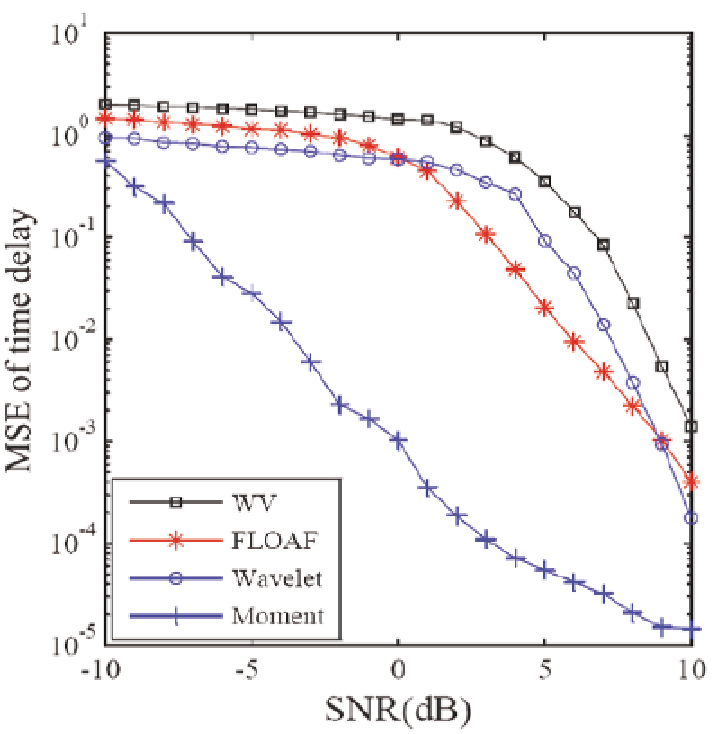Geoscience Reference
In-Depth Information
Fig. 4. MSE of estimated time delay in the conventional and proposed methods.
There is a similar observation for Doppler that is showed in figure (5). The error is also as
MSE versus SNR. In this figure, the conventional methods are WV [Chassande-Mottin & Pai,
2005] and FLOAF [Ma & Nikias, 1996].
As portrayed in figure (5), WV offers very good results in high SNRs which is expectable. But
in the low SNRs, the interaction terms are relatively large and this method fails. So in low
SNRs, FLOAF presents more suitable results in comparison with WV. Again in this figure, the
power of moment method is absolutely visible.
It is worth mentioning that the obtained results are in an unknown noise power scenario.
The moment method also can estimate the noise power. It is important that in addition
to parameter estimation, our method can also predict the noise power. This capability
helps to recognize the noise environment, and ameliorates noise encountering. To judge the
performance of the proposed moment method for estimating the unknown noise power, MSE
between the actual and the estimated noise power is portrayed in figure (6). For instance, MSE
is 10
−
5
in SNR 8. It means that in this SNR, we have an error between the actual noise power

